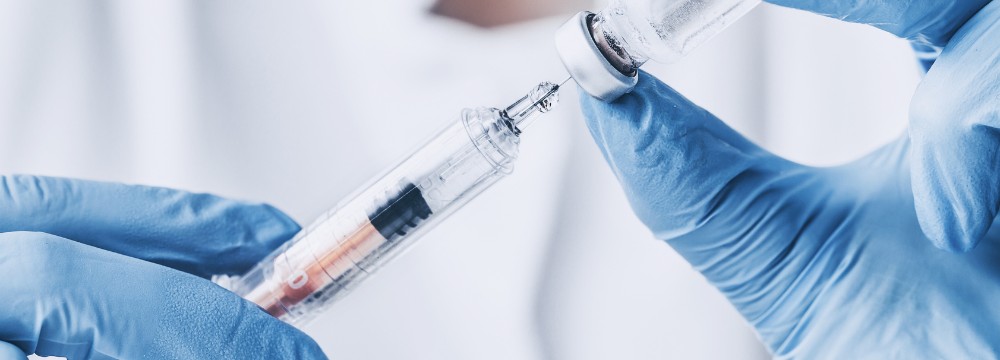
As we get older, the likelihood of developing prostate cancer increases. In the past, the generally accepted course of action was aggressively treating prostate cancer. As a result, many men were recommended to undergo a prostatectomy (removal of the prostate) when it wasn’t essential. We did not know much about a test known as PSA, or prostate-specific antigen, and that, combined with a “get cancer out” mentality, led to over-treatment in some patients with a very slow-growing cancer that might not even affect them in their lifetime.
Today, with improved knowledge and understanding of prostate cancer and PSA, we can better stratify risk in prostate cancer patients and often minimize the need for significant surgery and the side effects that go along with it.
How We’ve Improved PSA Testing and Prostate Cancer Detection
PSA is a marker in the blood that we use primarily to help detect and monitor the progression of prostate cancer. While several lifestyle choices, age, and other prostatic issues can cause an increase in PSA, very high numbers may indicate the presence of cancerous cells. Not long ago, a high PSA reading led to a biopsy and, if cancer was found, a prostatectomy. However, we now know that many cases of prostate cancer are not aggressive. As such, we stratify risk based on the results of several techniques and tests.
Over time, we have modified our interpretation of PSA results to minimize the number of unnecessary surgeries. We do so by following a PSA trend. If patients are experiencing higher than normal PSA, we may take a series of PSA readings over time to see the direction in which it is trending. Relatively stable, moderately high PSA numbers are often not as concerning as an upward trend, which can suggest cancer.
Why Not Get the Cancer Out?
Beyond the risks of surgery, one of the most significant side effects of a prostatectomy is erectile dysfunction. Though we have made great strides in sparing the critical nerves that create an erection, most men, for a time, will no longer be able to get or maintain an erection after surgery. This is likely because of the vascular damage prostatectomy causes – something that can’t be avoided. Fortunately, in many men, this is a temporary side effect of a prostatectomy and requires a series of therapies to regain erectile function. About 50% of men will regain their erectile function after a year. Up to 60% of men will return to what they consider normal function after two years. This largely depends on how the procedure is performed and any adjunctive therapies used. For example, radiation therapy, in addition to surgery, may cause additional dysfunction. Even the type of adjunctive care will make a difference. As such, Dr. Natale will work with your surgical oncologist to create a treatment plan to minimize these effects.
Lifestyle Changes and General Health
It’s important to remember that as we age, and if we are experiencing poor metabolic health, erectile function can be significantly compromised independent of cancer treatment. Patients with type two diabetes, smokers, and anyone else with compromised blood flow around the body will have a harder time getting an erection both before and after their surgery. An important part of cancer treatment, regardless of the procedure or condition, is good general health, and we strongly encourage our patients to consider improving their diet and lifestyle habits.
The Continuum of Managing Erectile Function
Dr. Natale takes post-prostatectomy erectile dysfunction very seriously as it causes significant physical ramifications, and the emotional and mental health effects cannot be overlooked. Relationships will change after a prostatectomy, which is exacerbated if the patient experiences protracted ED. Sexual function is one of the most basic and essential human needs, especially in middle age, yet it is something that we don’t discuss or address often enough. As part of a multidisciplinary team, Dr. Natale helps patients regain their sexual function, which many don’t realize is possible no matter how severe the condition.
Medications
Medications for managing erectile dysfunction allow for improved blood flow into the penis. Several drugs have now come off patent and are sold generically. These medications are significantly lower in cost than they once were, making them readily available for many patients. The two mainstays of drug therapy are sildenafil, generic Viagra, and tadalafil, or generic Cialis. Maximum doses are 100 and 20 mg, respectively. We typically prescribe a higher dose to save patients on cost and ask them to cut pills to the minimum effective dose. We see excellent results using drug therapy; men can often return to a normal sex life quickly.
Psychological Considerations
Post-prostatectomy erectile dysfunction is not a psychological phenomenon, but we would be remiss to ignore the psychological and mental health component of not achieving an erection, especially if the man had compromised ability before the surgery. Whether in a long-term committed relationship or single, men with ED can benefit from therapy. Dr. Natale works with Liz Mallers, a Charlotte-based sex educator, to help individuals and couples during this difficult time. Often working with a sex educator or therapist can improve the partners’ relationship and their sex life.
Injections
Injections of Prostaglandin are an option for patients that do not respond well to ED medications or for whom the ED medications no longer work. Injections may seem painful but know that the flaccid penis is one of the body’s least sensitive areas. Getting an erection from injections is a viable, albeit indiscreet, way to achieve a better sex life.
Pump Devices
Penis pumps were once the mainstay of ED that did not respond to medications. The vacuum action of the pump pulls blood into the penis, and a thick rubber ring is rolled onto the base of the penis to cut off blood drainage. While this can effectively allow them to stay erect, the quality of erections is a concern as this is vascular blood and, therefore, colder – an issue often perceptible to both the man and their partner.
Surgical Options
While relatively less known than its non-invasive alternatives, a surgical solution to intractable erectile dysfunction should be considered when other options in the field. Surgery consists of the implantation of a three-piece medical device. First, the corpora cavernosa of the penis is removed and replaced with a prosthetic. Using a pump hidden in the scrotum and a water reservoir tucked away in the pelvis, the patient can achieve a satisfying erection by pressing the pump about ten times. This is a discreet and reliable way to achieve an erection, and most patients and their partners are delighted with the results. While surgery requires downtime, post-procedure therapy is not without pain, it is often the only and best option for some patients.
The Bottom Line
Erectile dysfunction after prostatectomy is a major concern for many patients. While we are happy to report that with a comprehensive therapeutic continuum of care, most of our patients can regain their erectile function, we do have some for whom this therapeutic process doesn’t work. Many patients who do not understand their surgical options come to us years or even decades later, having never heard of a penile prosthesis. Once they have the procedure, they can enjoy the sex life they once thought was beyond their reach. Most importantly, contacting Dr. Natale to learn more about the options we discussed above will get you on the path toward a renewed sex life.









